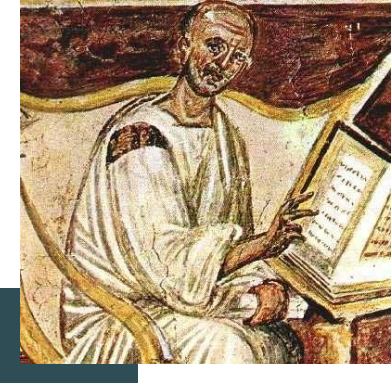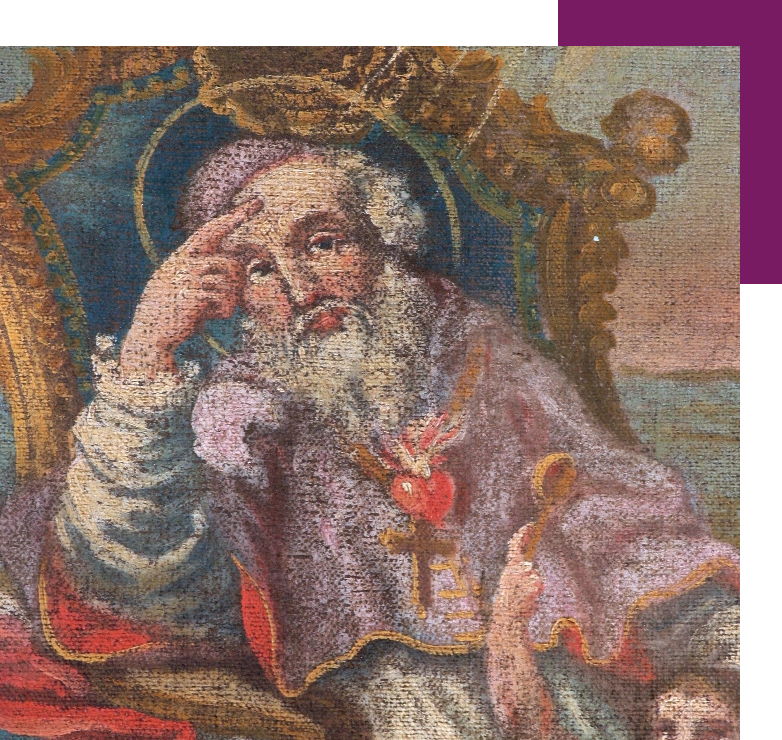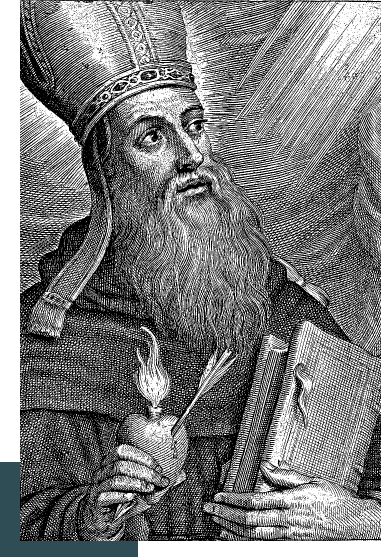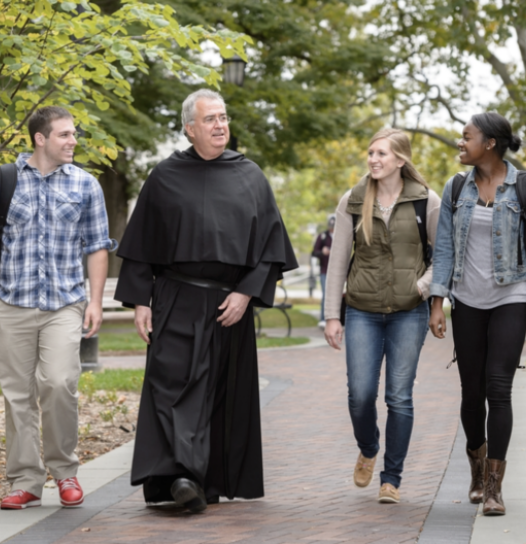Saint Augustine
Saint Augustine Of Hippo
St. Augustine of Hippo was a theologian, writer, preacher, rhetorician, and bishop. Although he experienced many hardships in his life, Saint Augustine set an example for men and women around the world to follow. His work is reflected in the lives of Catholics in the Augustinian tradition who continue to care for those in great need.
Today, Catholics in the Augustinian tradition represent a growing community in Pennsylvania, New York, and other parts of the United States. We continue to foster a sense of community and learn from St. Augustine of Hippo, his life, and his teachings.


Who Is St. Augustine?
Aurelius Augustine was born in 354 at Tagaste, Algeria. He was the son of Patricius, a non-believer, and his devout Catholic wife, Monica. Augustine’s mother enrolled her son as a catechumen as a child. However, Augustine’s baptism was deferred to a later time in accordance with custom.
In his early years, Augustine possessed an inquisitive mind. He set his sights on a career that would bring him both wealth and fame. Augustine’s parents heartily endorsed their son’s career goals and wanted to provide their son with the best education.
Following his studies in Tagaste and later in Carthage, Tunisia, Augustine taught rhetoric. He first served as a teacher in his native town and later became a teacher in Rome and Milan.
Augustine traveled from city to city and encountered many opportunities and challenges along the way. He was also on a deep spiritual journey, searching for inner peace and lasting happiness.
Augustine Becomes A “Servant Of God”
The example, prayers, and influence of Monica played a role in her son’s spiritual journey. They ultimately led Augustine to convert to the Catholic faith.
At 33 years old, Augustine was baptized by Bishop Ambrose of Milan. He also made a commitment to spend the remainder of his life as a “servant of God.”
As a servant of God, Augustine agreed to live his life in celibacy. He made this decision in spite of the fact that he had spent several years living with a woman whom he deeply loved and fathered a son, Adeodatus.
After Augustine’s baptism, he, Adeodatus, and his friend Alypius set out for his native town. They sought a monastic style of life together with other men who had experienced a radical conversion to the faith.
On the journey, at Ostia Antica just outside of Rome, Monica became ill. She died suddenly but happily, as she had witnessed Augustine’s commitment to Christ and the Church.


Augustine Embraces A Life Of Prayer, Work, And Fellowship
In Tagaste, Augustine, Adeodatus, and several of their companions prayed, worked, and lived together in fellowship. They shared their insights about Scripture and the Christian vocation and learned from one another.
After three years, Augustine was called to become a priest while on a visit to the city of Hippo, about 50 miles from Tagaste. This was contrary to what Augustine might have chosen for himself, but he still chose to accept what he believed was God’s will for him.
In Hippo, Augustine established a monastic community that he directed while assisting the bishop, Valerius. Several years later, Augustine succeeded Valerius as head of the diocese.
Augustine was hesitant to move into the bishop’s house, since he did not want to disturb the peace of the monastic community. At this point, Augustine wrote his Rule for the community’s continued direction. He then established a third community for clerics in his new episcopal residence. Thus, from the time of his return to Tagaste until his death, Augustine resolutely opted for a monastic style of community life.
As bishop, Augustine found his desired life of contemplation and separation from worldly concerns. He focused on his many obligations as leader of the local Church and as a civil official. In addition to his pastoral duties within Hippo, Augustine traveled to church councils in the region of North Africa. He did so 40 to 50 times over the course of the 35 years he served as bishop. Augustine even made the nine-day journey to Carthage for meetings with other bishops about 30 times.
Augustine’s extensive travels were physically demanding, but they may be considered modest when they are compared to his writings and sermons. Over the course of Augustine’s lifetime, he wrote over 200 books and nearly 1,000 sermons, letters, and other works.
Death Of St. Augustine
In 430, Augustine fell ill. He took to his bed and spent his days and nights praying the penitential psalms, which he asked to have written on the wall of his room.
Augustine died on August 28, as the Vandals invaded Hippo. Following Augustine’s death, his body was laid to rest in Hippo. It was later taken to Sardinia and moved to Pavia, Italy, where it now rests in the Basilica of San Pietro in Ciel d’Oro.


THE LEGACY OF
The Legacy of St. Augustine in the Catholic Church
Augustine was a thoughtful, empathetic, and loving servant of God. He valued community, welcomed others, and treated them the way they deserved to be treated. Augustine also laid the foundation for the Order of St. Augustine. The Order continues to explore ways to care for those in great need both in our Province work throughout Massachusetts, New Jersey, and surrounding states and in our greater missions throughout the world.
We invite you to continue to learn about St. Augustine, his life, and his teachings.
Sign up for our e-newsletter, where we share news and updates on how we continue to follow in St. Augustine’s footsteps.
